Today as part of the Intel Memory and Storage Moment 2020, the company is launching new 144-layer NAND SSDs. The Intel SSD D7-P5510 is the company’s new TLC offering shipping at the end of 2020. In the first half of 2021, with our best guess being around the time of Ice Lake Xeons in the first half of the year, we will get the Intel D5-P5316 QLC SSDs that will raise capacity taking another chunk of TAM from the hard drive market.
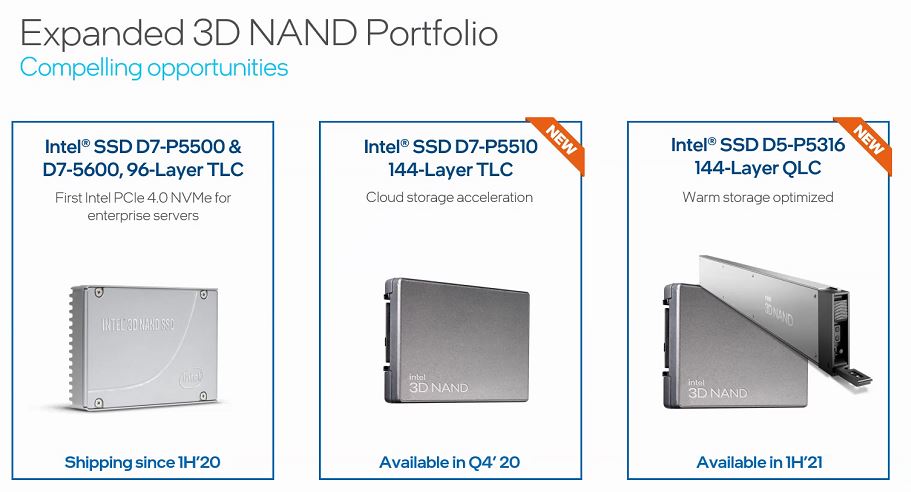
With this generation, Intel can again claim that it is able to provide more capacity per drive than with hard drives. It is trying to say that it can have better TCO on a dollar per TB basis, but that is taking a lot of assumptions such as using erasure coding/ RAID and compression. It is still a bit of a stretch.
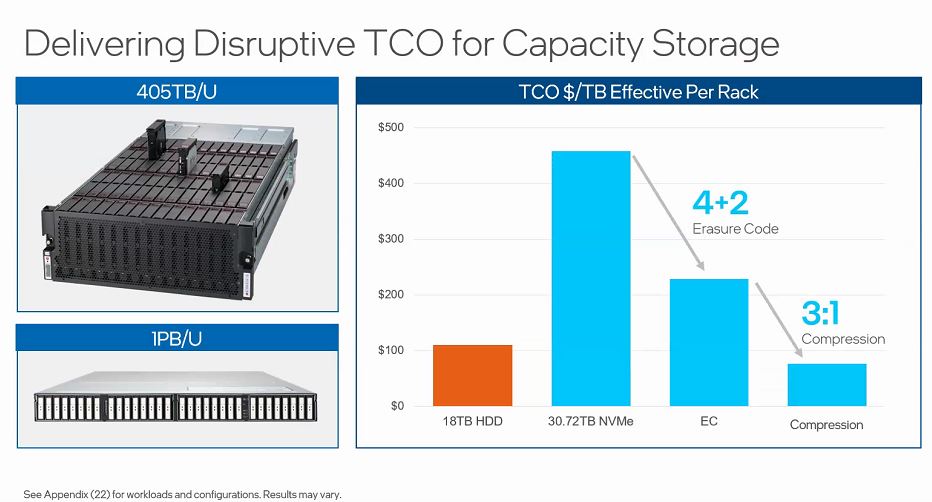
Something we did notice is that the company seems to be showing the hard drive system as a 90 bay 4U system with 18TB hard drives. From the photo, this looks like the older 90-bay version of the 60-bay 4U Supermicro server we did a feature on over the summer. The system we used for this was one of the first off of the assembly line from Supermicro so we only could feature the 60-bay.
For the EDSDFF system, we know exactly what Intel is using. We had hands-on time with the Supermicro 1U EDSFF system as part of that series.
At the time, this EDSFF system was a 0.5PB/U but we mentioned that 30TB class drives would push it to 1PB/U. Our expectation at the time was that this would happen in 2020, however it looks like the D5-P5316 30TB drives will come out in 1H 2021. At the time, we probably thought there was a chance we would see an Ice Lake Xeon launch in some form by the tail end of 2020, but that has moved out a few months.
Intel D7-5510 SSD
With the Intel SSD D7-P5510 series, we get a new general-purpose TLC NAND SSD. Again, Intel says that this PCIe Gen4 SSD will be available in Q4 2020. That leaves about two weeks to ship, but Intel says it is in final validation with customers. From the STH team to the Intel teams who are going to be supporting this over the next two weeks, we hope you get some time off to spend the holiday season with your families.
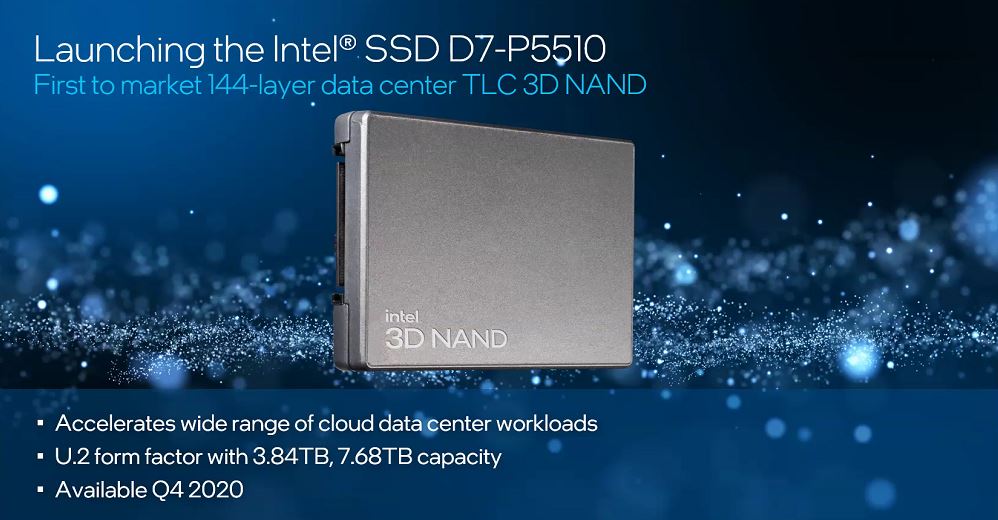
Intel is saying that they can get up to 7GB/s read and almost 4.2GB/s write speeds. along with 930K RR and 190K RW IOPS with around a 1 DWPD endurance level.
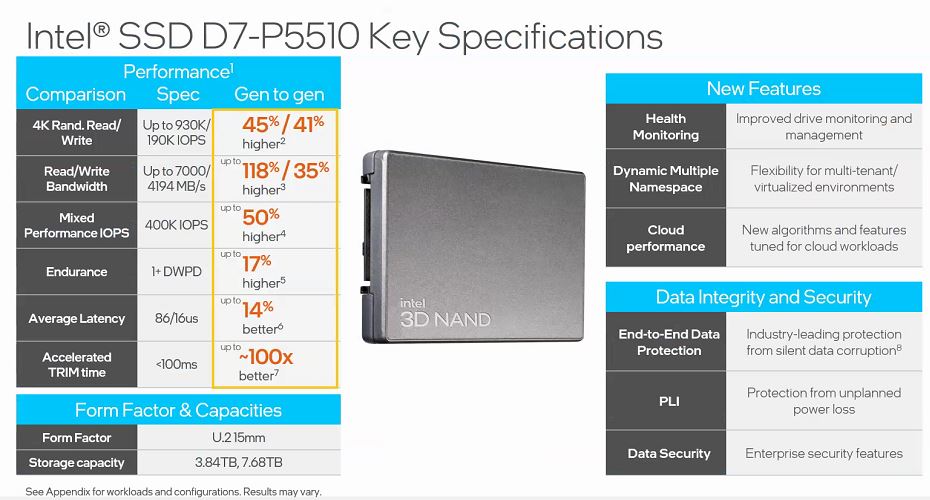
These are Intel’s more general-purpose SSDs. They are not designed to go after hard drive in terms of the lowest cost per GB and have more performance because they are TLC drives. They are also nowhere near the performance figures being put up by the newly announced today Intel Optane P5800X SSD.
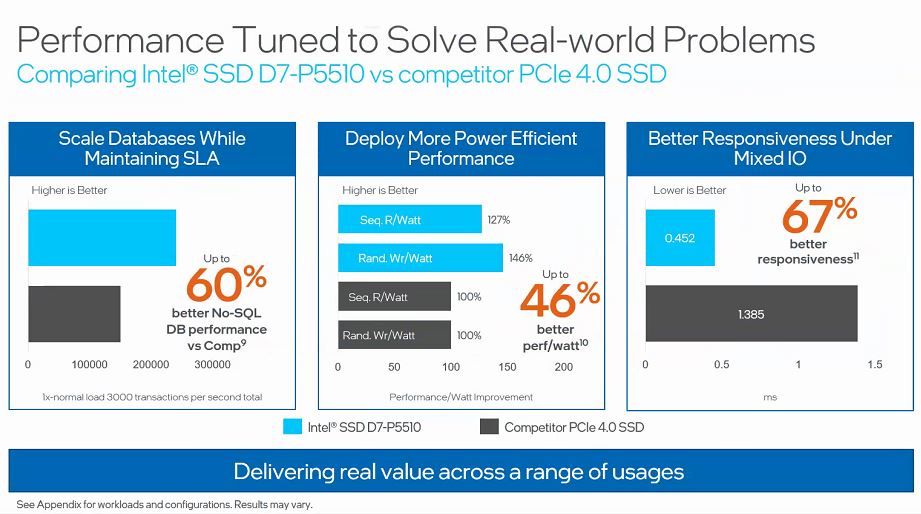
One of the big features of the new drive is that the company says it will have a high-speed trip that can trim the entire drive in 100ms. That means the operation can happen much faster than on previous generations. Anyone who has waited minutes to get a trim confirm on old SSDs can relate to this.
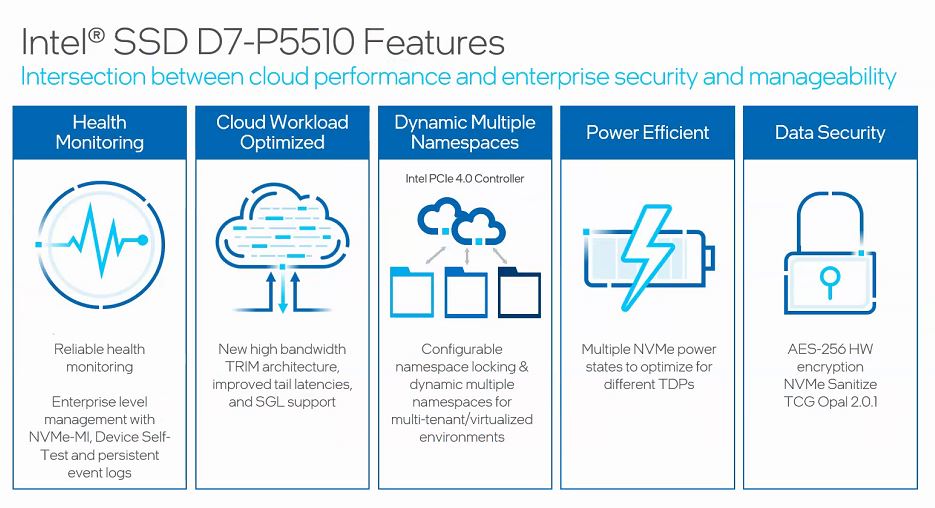
Overall, Intel is positioning this with cloud providers and major systems OEMs which makes a lot of sense for this drive’s launch. Another key theme we are seeing is that these are only being sold in 3.84TB and 7.68TB U.2 form factors. Along with the transition to a new NAND generation and PCIe generation, we are also seeing a migration away from even 960GB-1TB SSDs.
Intel P5-P5316 SSDs
For capacity storage, we get the Intel D5-P5316 NVMe SSD. Intel is offering this SSD in U.2 as well as E1.L configurations.
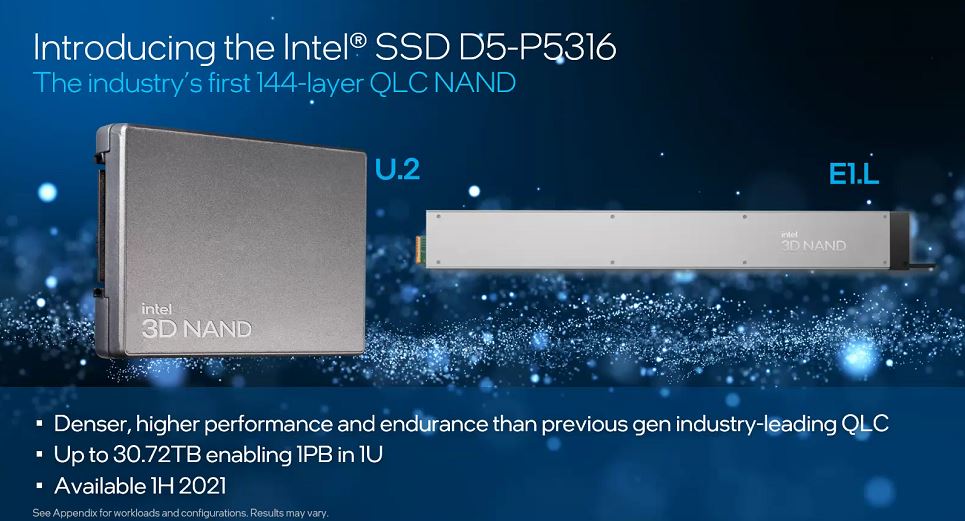
These are not as fast or as high-endurance, as the P7-5510 TLC drives, but the QLC drives can still take advantage of PCIe Gen4 speeds.
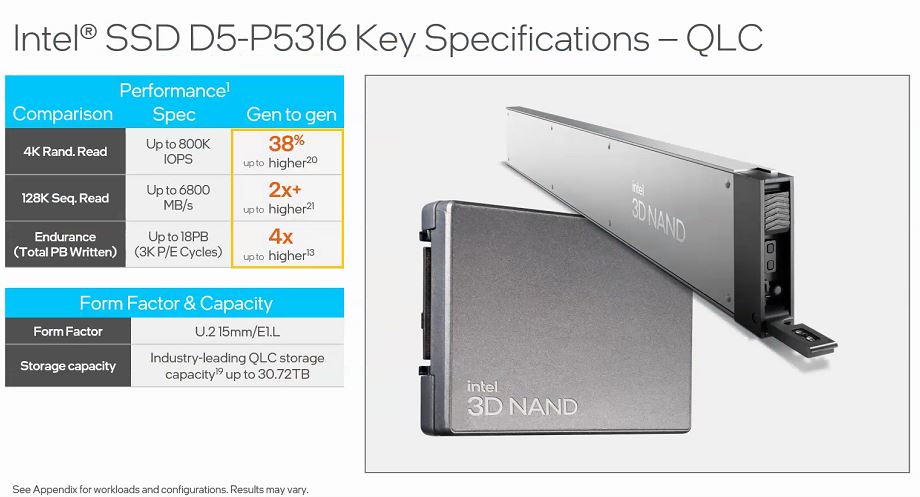
We will probably get more information on these as we get closer to launch around Q2 of 2021.
Final Words
Something was interesting in today’s Intel announcements. First, Intel has these new PCIe Gen4 NVMe SSDs along with next-gen Optane PCIe Gen4 SSDs. Second, and more profoundly, Intel is not releasing any SATA SSDs. Just this week, we had a video on YouTube discussing how the new PCIe Gen4 drives will spell the end for SATA in the data center as well as in Eric’s review. Then Intel did its big data center SSD announcement, and all three drives were PCIe Gen4 NVMe SSDs instead of SATA. This was not planned, but a nice coincidence.
Overall, we are very excited about E1.L and E1.S drives in 2021 from Intel, as well as the company’s new PCIe Gen4 lineup.

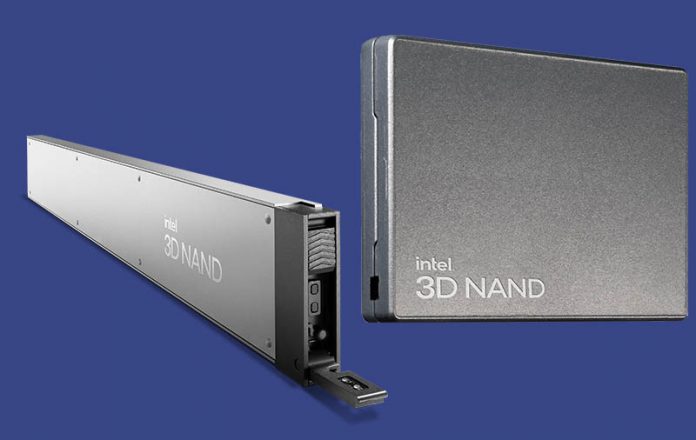



These are nice. Good to see some company going up in terms of capacity. Now, about the prices, Intel…
We’ve seen large capacity announcements for years now.
8TB seems to be some sort of ceiling that manufacturers have yet to break in any real way.
Either that, or the Hyper-Cloud folks are absorbing everything above that capacity & we in the OEM channel are left with the small stuff?